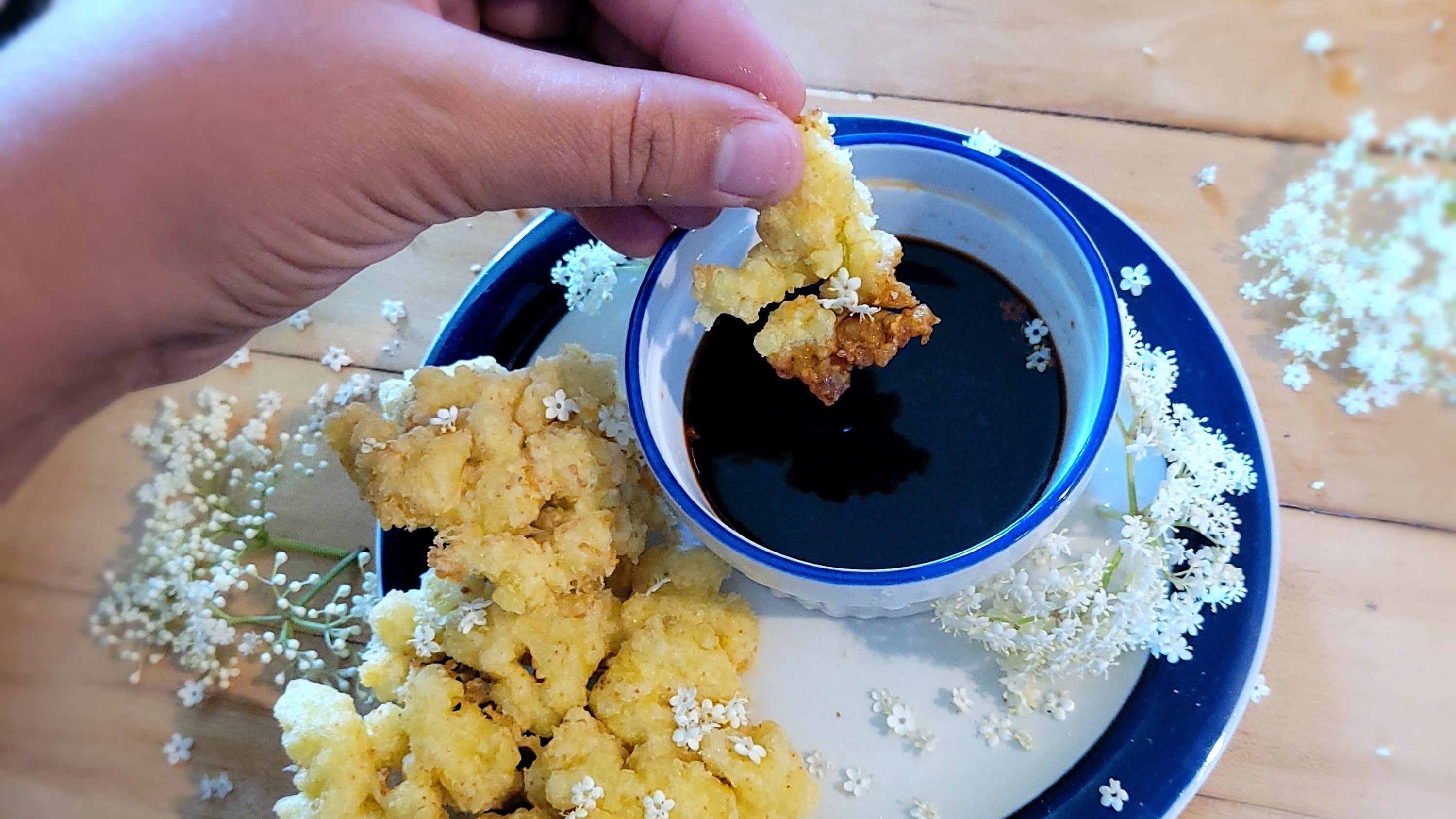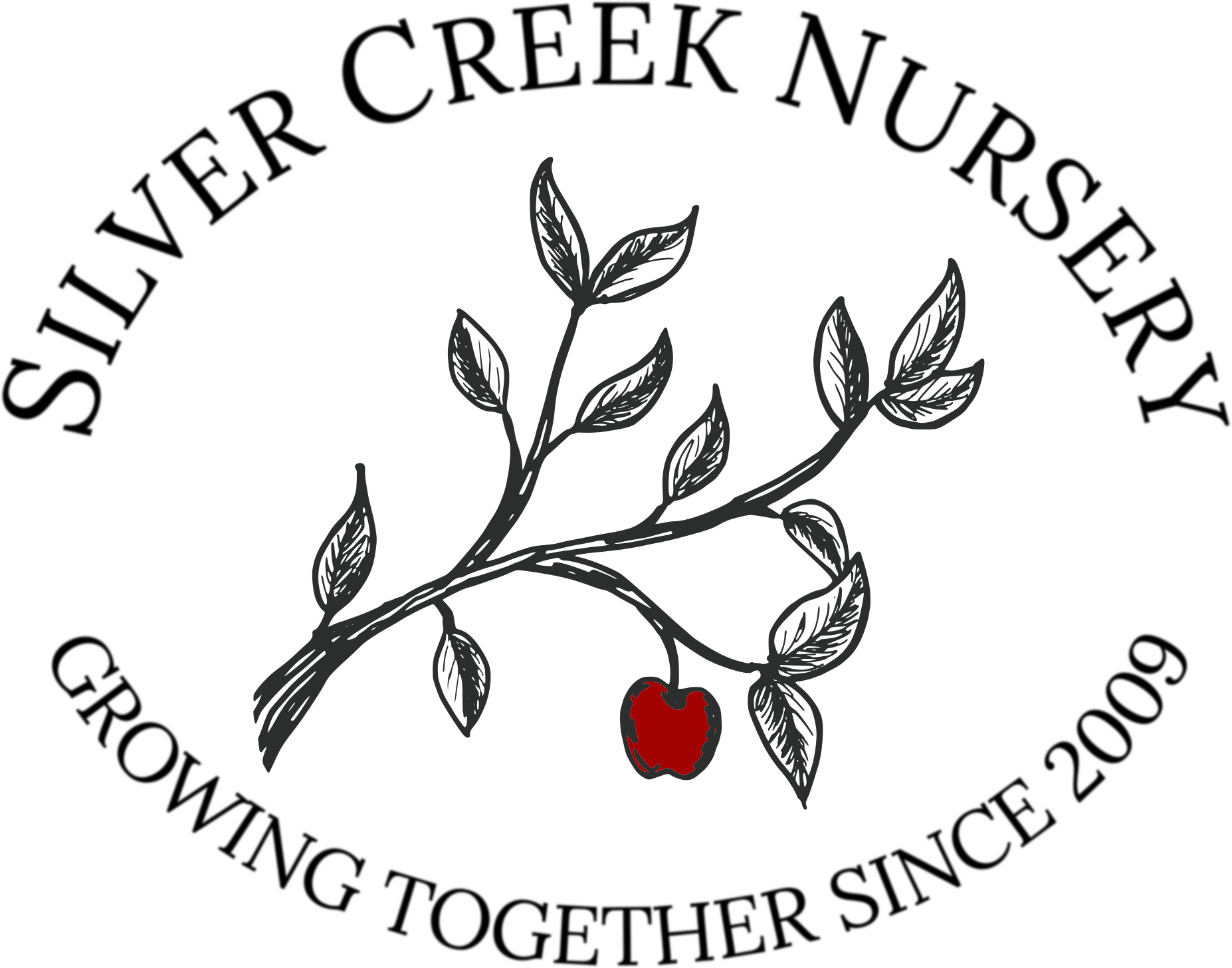
Elderflower Fritters and Tempura
Have you ever tried using elderflowers in-season for a special weekend breakfast of elderflower fritters? Or would you like to try making your own elderflower tempura to pair with sushi or a salmon budda bowl?
Elderflowers are about to be blooming and this is your chance to plan ahead and try out both!!
Harvesting Elderflowers:
If you don't already have elderberry bushes growing, you'll have to go foraging (and can plan to plant some - we offer potted York and Scotia elderberries now through fall as well as bareroot York, Scotia and wild elderberry plants every spring)! Harvesting the flowers can be done at any time of day, but will be best if you wait until shortly after the dew dries them off in the morning, or if you want them for morning fritters, harvest them during the evening beforehand, before dew falls.

Check each of your heads of flowers for bugs, but beware of shaking them too hard, especially if you're harvesting later on in the blooming period, the petals will easily fall off. Don't try to rinse them under water, this will also knock off the petals. Because you cannot wash them, aim to find a patch that is away from areas such as roads or contaminants from vehicles passing by.
Freshly picked elderflowers can be stored in the fridge for a few days just like a veggie harvest - I packed mine like I do fresh lettuce greens, just laying them into a large container with a paper towel (or small cloth) on the bottom to collect/redistribute moisture.
Once you have your blossom heads (the flowers are grouped together in clusters, which are called umbels) and are ready to make fritters or tempura try to remove as much of the green stems as possible. They can cause upset stomach and are considered toxic in the same way as unripened elderberries. However, the small amount of young stem left holding the flower umbel together will be just fine, and it won't be possible to make fritters or tempura without keeping the umbel together!
Making fritters:
A basic fritter batter is as follows. You may also want some starch (flour, potato starch, arrowroot powder) for dipping the flowers into to help the batter stick, and an empty egg carton can make a nice spot to set fritters to cool and soak up a bit of the oil.
- 1 cup flour
- 1 tsp baking powder
- 1 TBSP melted butter
- 1 egg
- 1/2 cup milk
- dash of salt
Combine the dry ingredients, stir, then add the wet ingredients and stir together. Prepare your pan with frying oil and a plate lined with paper towel (or brown paper bag or something else that will soak up some of the oil).

Holding the elderflower umbels by the remaining bits of stem, dip gently into your chosen starch and then the fritter batter, using a spoon or chopsticks to help lift batter over the back side (petals still fall off easily here). Drop into the hot oil and allow the fritter to get golden brown before removing it.
If desired, fritters can be made in a pancake style, by simply laying the flower umbel into the fritter (or your favourite pancake batter) right after pouring a scoopful onto the griddle. Flipping the pancake won't be difficult since the little stems will be super bendy and will fold into the pancake once flipped. Both fritters and pancakes can be served with some maple syrup (and bacon?!) for the ultimate breakfast!
Making Tempura:

Last year, I made elderflower tempura (which is actually what all of the photos in this post are from since I haven't taken photos of fritter/pancake making yet) as part of a sushi dinner! I did the sushi ahead and had it in the fridge, then chopped up veg and prepped elderflowers as above. I followed this recipe for making tempura batter and I used some arrowroot powder instead of potato starch for coating the flowers and veg before dipping in the batter. The recipe linked above worked really well and was very easy to follow - I did substitute arrowroot for the suggested potato starch.
We used tamari as the sauce to dip our tempura into because I forgot all about shopping for sauce ingredients, but you can also make or buy tempura dipping sauce; it's called Tentsuyu and recipes pop up quickly if you search online.
Both elderflowers and elderberries have long been known and used in herbal medicine, and some of the other uses of these flowers include oxymels (vinegar, honey and elderflowers), vinegar infusions and teas. You can also have fun exploring the culinary delights of elderflowers in bread or other baked goods - in general, the flavour is quite mildly floral and just about anything you make baked-goods wise will likely work well with elderflowers added.

Food is medicine, but it absolutely doesn't have to taste like the (likely) negative medicine flavour that often comes to mind when we talk of such things! Here's to any and all kitchen creations this post inspires you to try!
Happy growing season!
Jodi
